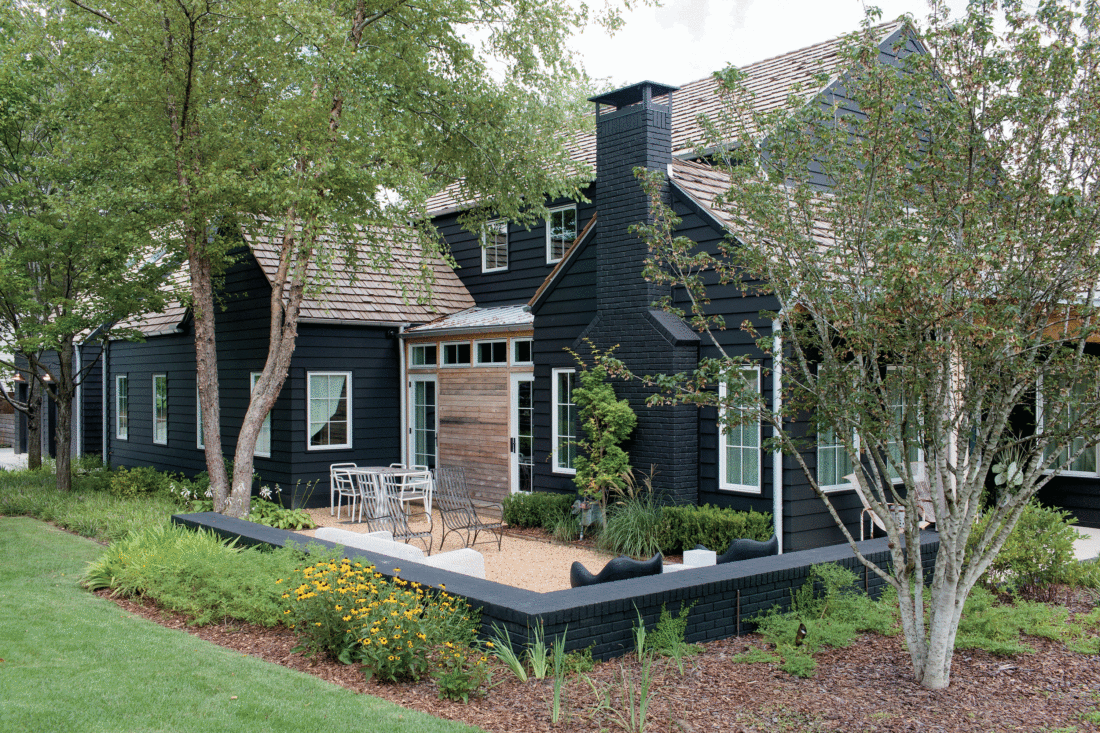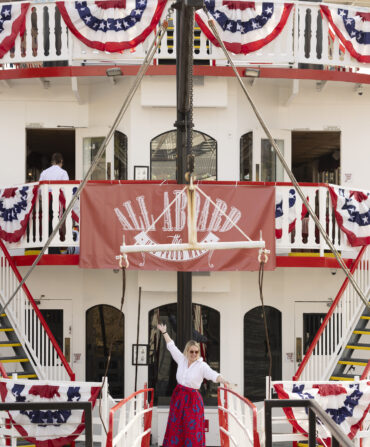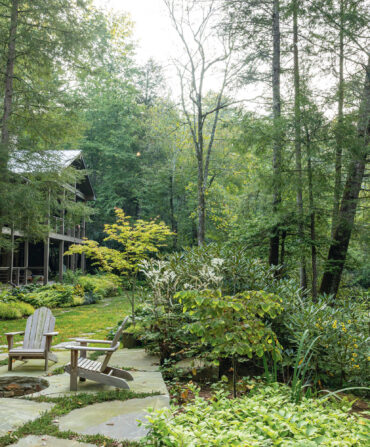Katherine and Adam Thrower’s house, nestled on a corner lot in Birmingham, Alabama’s verdant Edgewood neighborhood, prompts a double take. It resembles the other houses on the street—modest in scale, lush in landscaping—but its siding is black and its corners are mitered. If mitered corners on exterior siding are not thrilling to you, talk to Adam, the builder; he’ll describe the hours of additional work they require, led by local carpenter Lee Wallace, who achieved their perfect angles, the elegance of their final effect. “It’s way more than a corner,” Adam says. In fact, it’s an encapsulation of this home’s purpose: to highlight the simplicity of forms and materials through the craftsmanship of the people who built it.
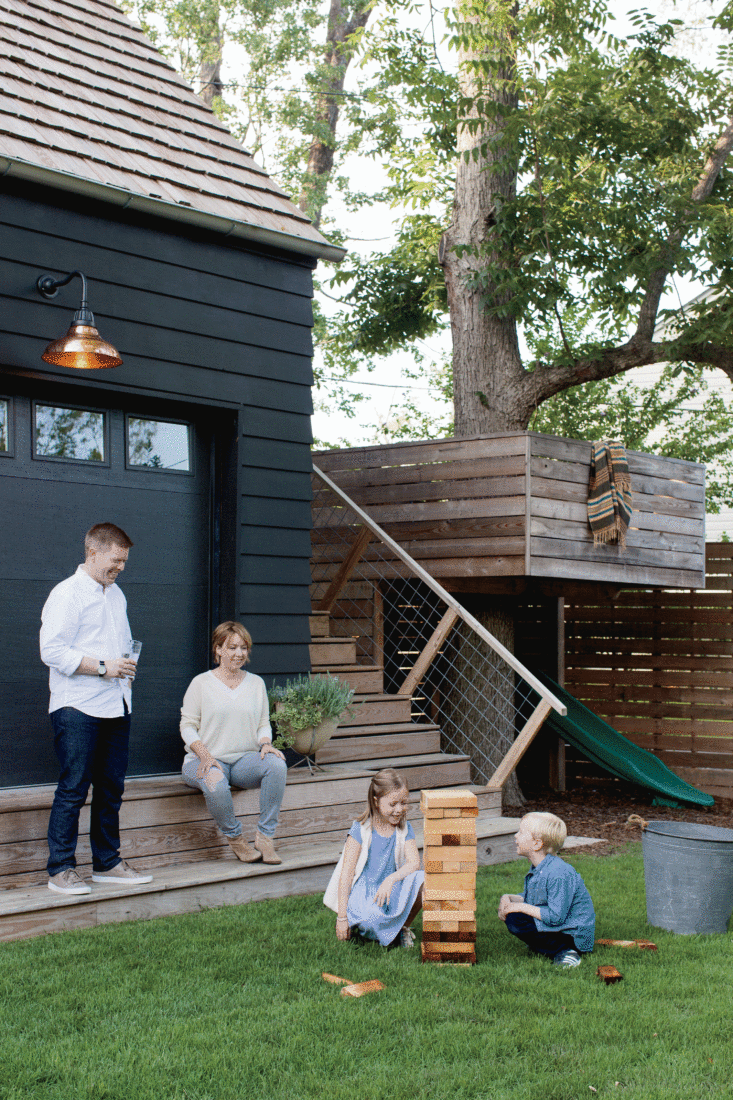
Photo: GRAHAM YELTON
The Throwers at home.
When they tell the story of their new residence, the Throwers pull out a picture of Daniel McCurry, of Father Nature Landscapes, pointing their young daughter to a honeysuckle vine he planted. “The kids know everyone who helped create this,” Katherine says. “When we see the house,” Adam adds, “we see Daniel.” And the artisan who created a custom top for their outdoor table, and the drapery designers who devised an
ingenious hidden track for the linen sheers. Even Adam’s father, a longtime cobbler, chipped in, fashioning leather straps for the kitchen banquette’s cushions.
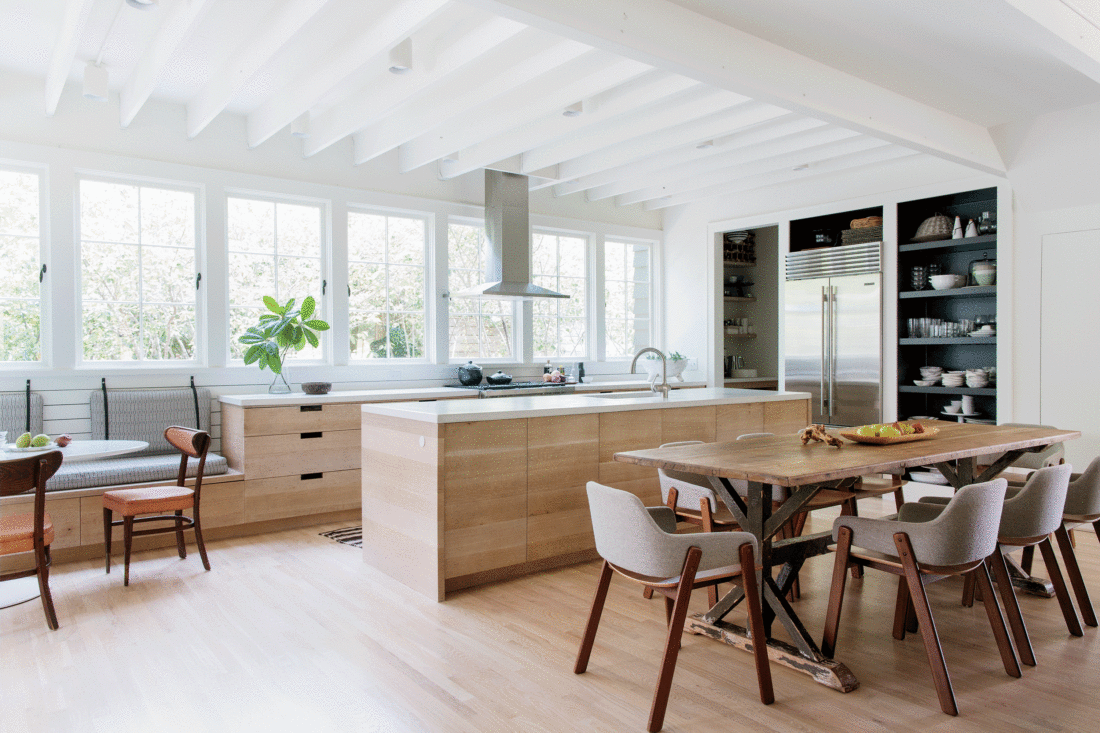
Photo: GRAHAM YELTON
The renovated kitchen includes a banquette finished with leather straps made by Adam Thrower’s father, a longtime cobbler.
“Growing up in my dad’s shop, I always saw him and my grandfather work with their hands,” says Adam, who has many years of experience in construction. “I saw them take people’s problems and fix them. They took great pride in their work, and I’ve tried to emulate that in mine.”
Birmingham called the Throwers home in 2015 after a stint abroad. Alabama natives, Adam and Katherine were an ocean and a continent away in New Zealand when a for-sale notice about the house popped up in Katherine’s Facebook feed. A vicarious walk-through with Fran Keenan, an interior designer Katherine had met fifteen years earlier at a book club, and Marshall Anderson, an architect, persuaded them to jump. The couple’s time abroad had reoriented their priorities: A smaller space, they realized, fostered the closeness they had come to treasure. And, Katherine notes, “Birmingham is a great place to come back to.”
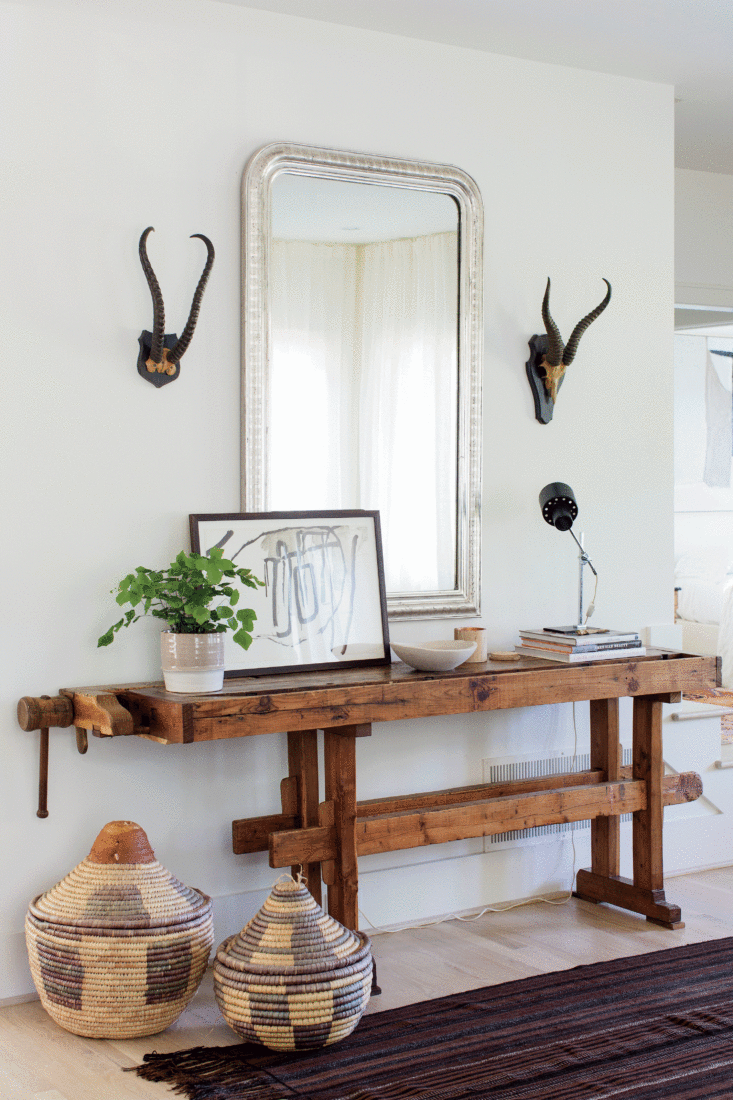
Photo: GRAHAM YELTON
The house’s entry.
The original cottage had broken hips along the roof and gables that turned at odd angles; though these asymmetries were straightened out and a small second story added, the Southern-vernacular footprint remained the same. The Throwers’ children, now ages eight and six, also had a crucial role in the design. Their upstairs bedrooms were each constructed with secret hideaways: In one a passage tunnels back to otherwise unused space in the front gable, and in the other a ladder leads up to an aerie protected by transparent panels. The second story was partially soundproofed to soften the ruckus of little feet, and the silvery-blond flooring throughout is conveniently the shade of dust.

Photo: GRAHAM YELTON
Sconces illuminate collections in the great room.
Adam and Katherine envisioned a relatively neutral palette—the rooms are linked with a wash of whites and browns and grays—but Keenan coaxed them toward understated patterns and dashes of warmth: vintage rugs, pops of wallpaper in the closets, white bathroom tile with the nubbly texture of brick. “We realized modern can be stark,” Adam says. “We wanted refined, we wanted clean, we wanted simple, but”—he nods to the original glass doorknobs throughout—“we like that there are older elements.” This blend allows the Throwers to approach the home as an evolving space rather than a series of static tableaux. “I needed that freedom and flexibility,” Katherine says, “so I could feel like it’s our space to play with.”
The Throwers and Keenan and the architect and carpenters and landscapers and even John Ward, of the Concrete Farmer, who poured the countertops, all contributed to this vision that’s both forward-thinking and elemental. Adam intentionally sourced the roof’s pine shingles from the Southeast, for instance, and incorporated untreated cypress siding that will weather naturally. “Simple is sometimes harder to achieve, but it’s also the most honest,” he says, pointing out the continuous lines that link architectural planes from the light-infused kitchen out to the deck. A well-built house has bones that deserve to be seen.
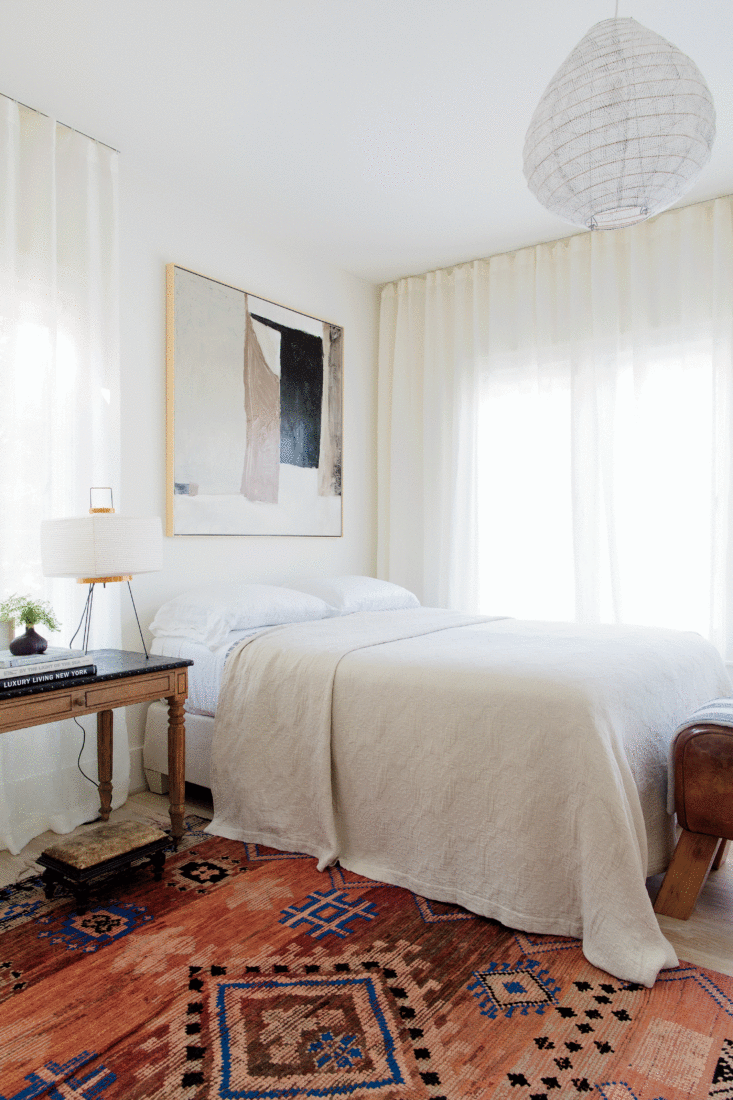
Photo: GRAHAM YELTON
Art by the Alabama artist William McLure in a bedroom.
The modern elements are also balanced by the intimacy of craftsmanship: paintings by local artists such as Amy Pleasant and William McLure, plantings of native serviceberry, those mitered corners. Embracing the human elements of the construction process even meant leaving in place a worn concrete driveway because it held the handprints of the previous residents. The Throwers not only recycled materials but also cherished the process. “The house has all that history inside of it,” Adam says. And more in the making: Back
in the living room at a grand piano squeezed in among comfy chairs, Katherine, who comes from a long line of musicians, is teaching her daughter to play.
>Click to see more photos of the Throwers’ home


